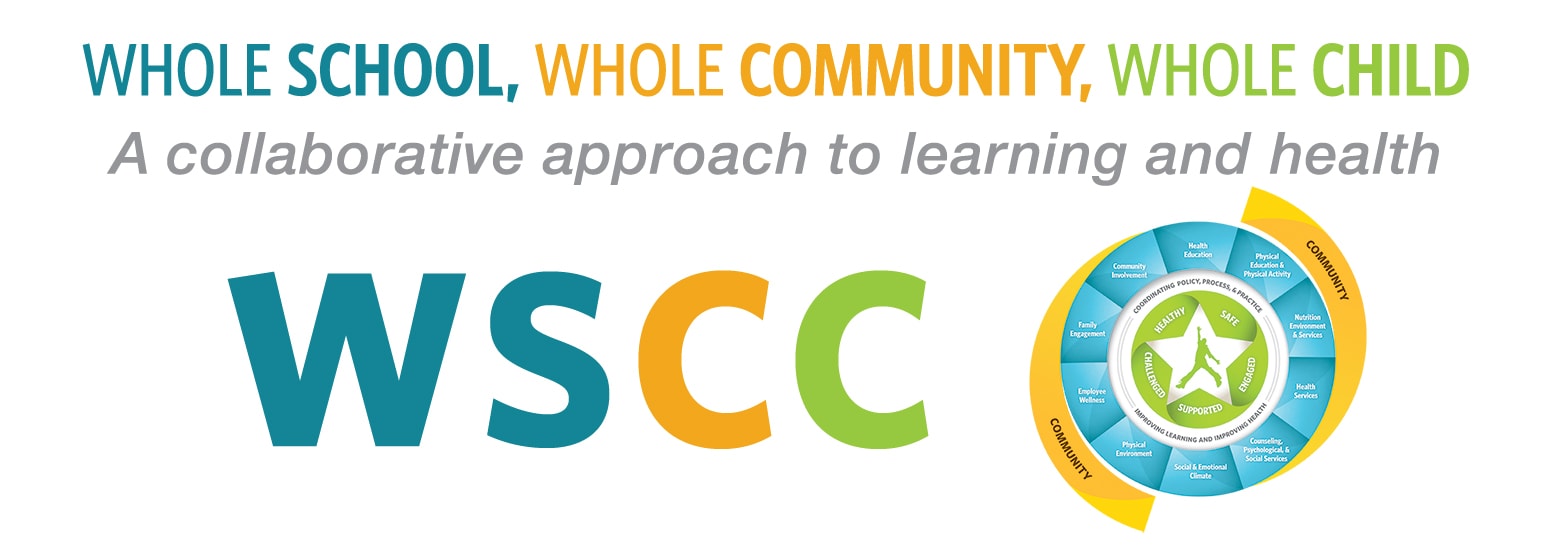At a glance
- WSCC is CDC’s framework for addressing health in schools.
- The student-centered WSCC framework emphasizes the role of the community in supporting the school.
- The WSCC framework also emphasizes the connections between health and academic achievement and the importance of evidence-based school policies and practices.

Overview
Public health and education serve the same children, often in the same settings. The education, public health, and school health sectors have each called for greater alignment. This would involve integration between education leaders and health sectors to improve each child’s cognitive, physical, social, and emotional development. The Whole School, Whole Community, Whole Child (WSCC) framework focuses on the child to:
- Align the common goals of both sectors.
- Enact a whole child approach to education.
How it works
WSCC is CDC's framework for addressing health in schools. This framework is student-centered and emphasizes the:
- Role of the community in supporting the school.
- Connections between health and academic achievement.
- Importance of evidence-based school policies and practices.
The WSCC framework has 10 components:
- Physical education and physical activity.
- Nutrition environment and services.
- Health education.
- Social and emotional climate.
- Physical environment.
- Health services.
- Counseling, psychological, and social services.
- Employee wellness.
- Community involvement.
- Family engagement.
WSCC Framework
Whole School, Whole Community, Whole Child (WSCC) Framework
The WSCC framework helps to improve learning and health
The WSCC framework places greater emphasis on several factors. One is the psychosocial and physical environment. Another is the increasing roles that community agencies and families play in improving childhood health behaviors and development.
The WSCC framework also engages students as active participants in their learning and health. CDC and ASCD (formerly the Association for Supervision and Curriculum Development) developed the WSCC framework. They did so by collaborating with key leaders from the fields of health, public health, education, and school health. The aim is to strengthen a unified approach, designed to improve learning and health in our nation’s schools.
Families and community agencies play a role in the WSCC approach
Involving family and community in schools is important to students' learning, development, and health. For instance, families can support and reinforce healthy behaviors in many settings—at home, in school, in out-of-school programs, and in the community. With help from school leaders, community agencies and groups can provide valuable resources for student health and learning. In turn, schools, students, and their families can contribute to the community in two ways. One way is through service learning. Another is by sharing school facilities with community members (for example, school-based community health centers and fitness facilities).
Schools can use the WSCC framework to promote lifelong healthy behaviors
Establishing healthy behaviors during childhood is easier and more effective than trying to change unhealthy behaviors in adulthood. Schools play a critical role in promoting the health and safety of young people and helping them establish lifelong healthy behaviors. Every school has a unique set of needs. To better serve their students, school leaders and staff can incorporate the WSCC framework components as they see fit. To see the WSCC framework in action, visit our Virtual Healthy School.
Resources
- Whole School, Whole Community, Whole Child (WSCC) Overview
- Child Trends | Creating Policies to Support Healthy Schools: Policymaker, Educator, and Student Perspectives, 2018
- Journal of School Health | Special Issue on Whole School, Whole Community, Whole Child, November 2015
- National Association of Chronic Disease Directors (NACDD) | The Whole School, Whole Community, Whole Child Model: A Guide to Implementation
- WSCC Team Training Modules
